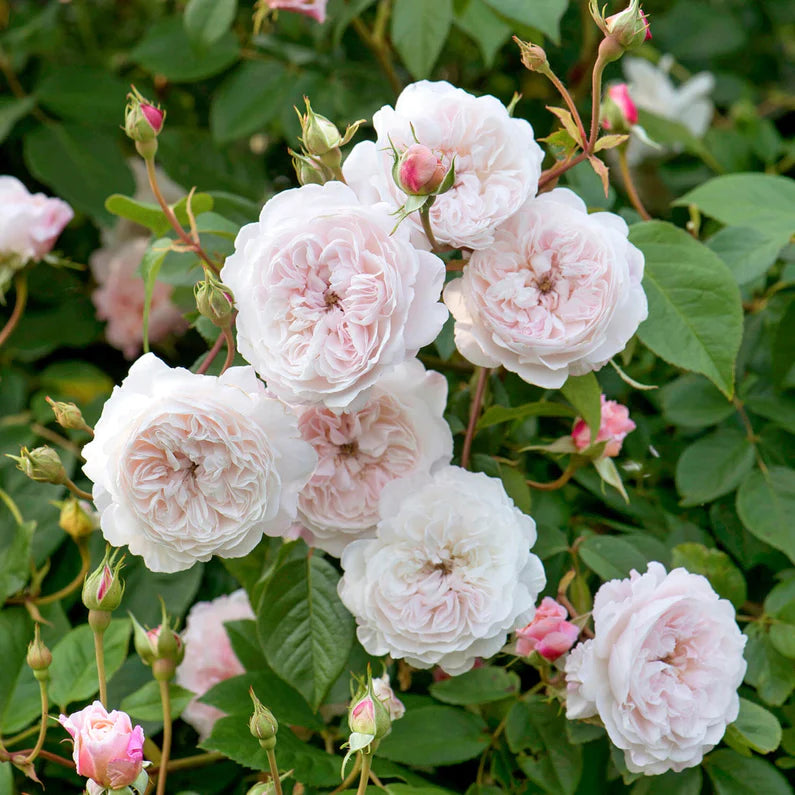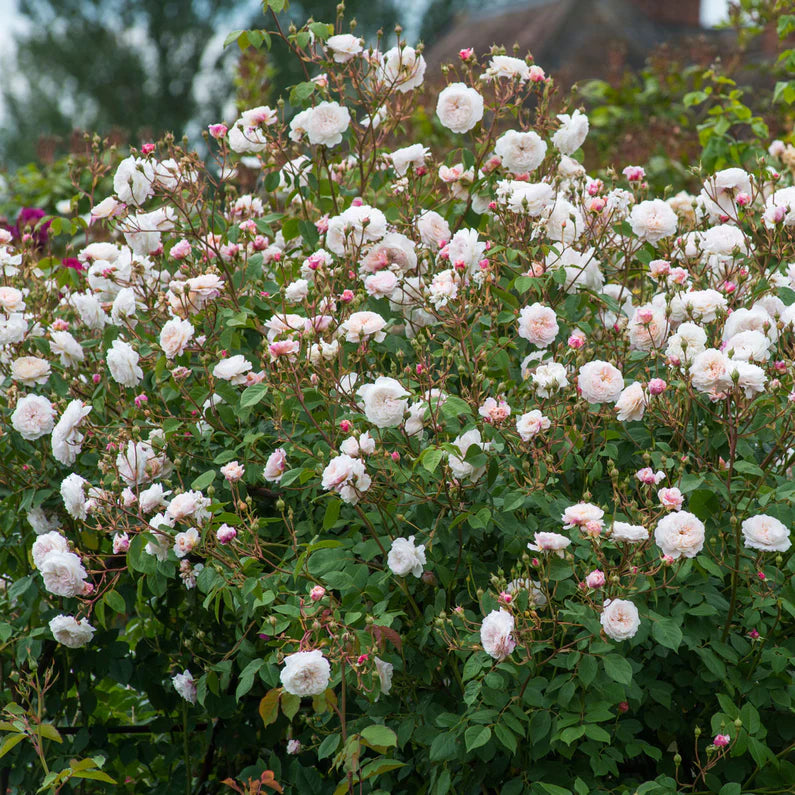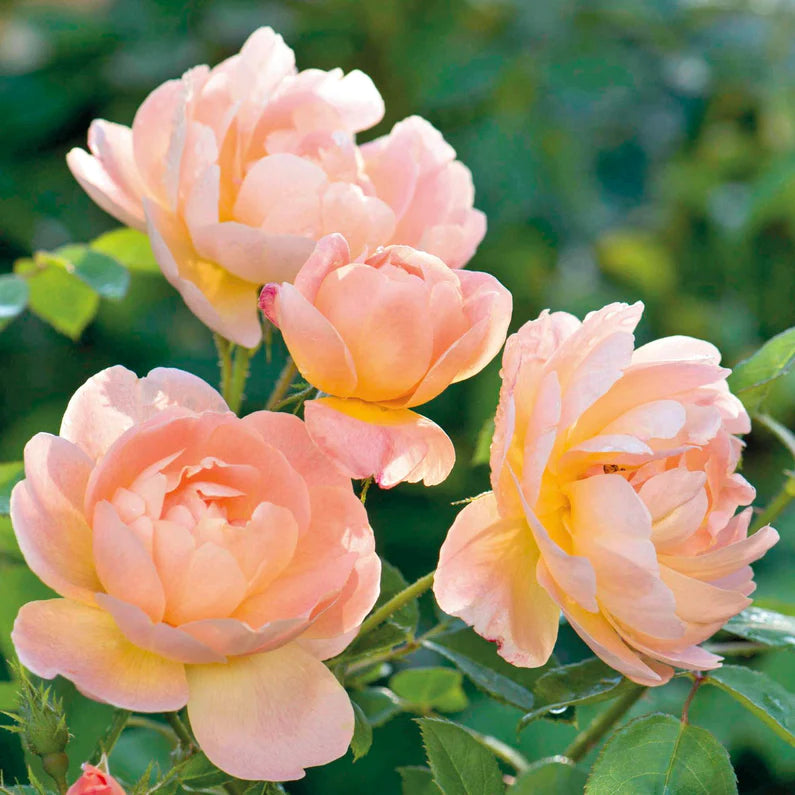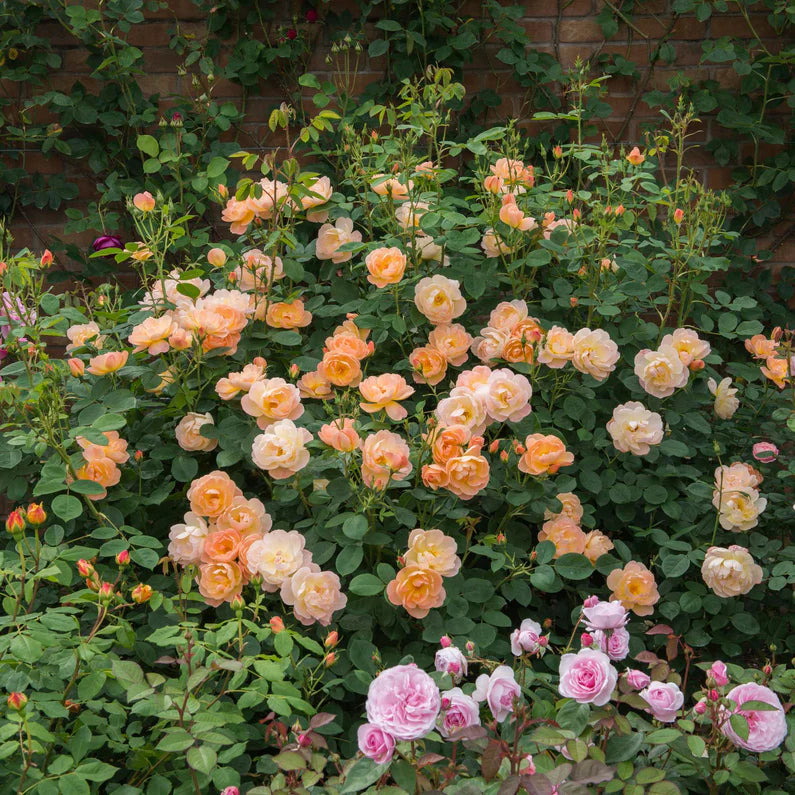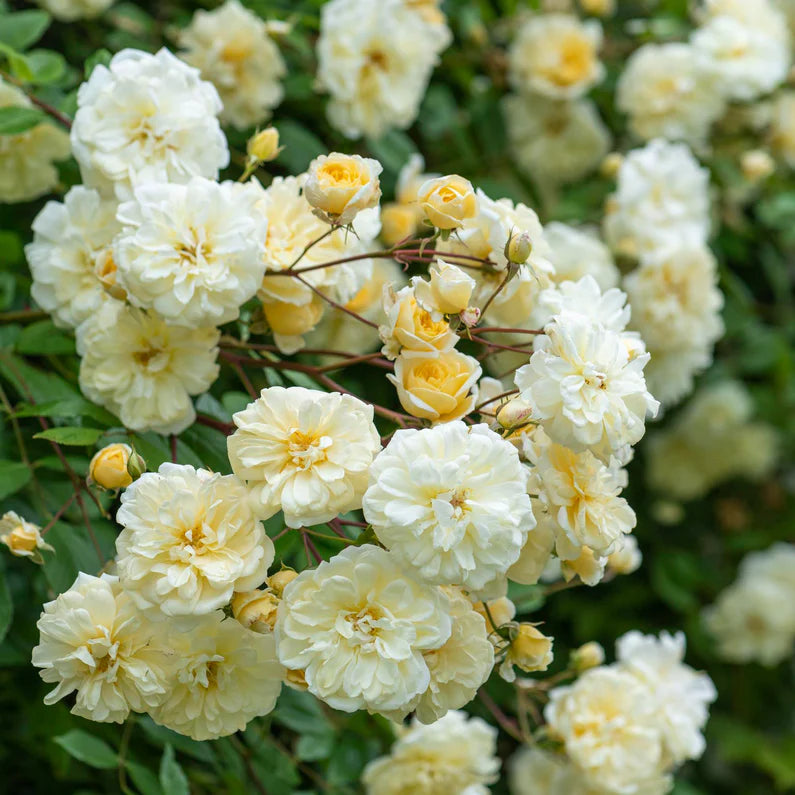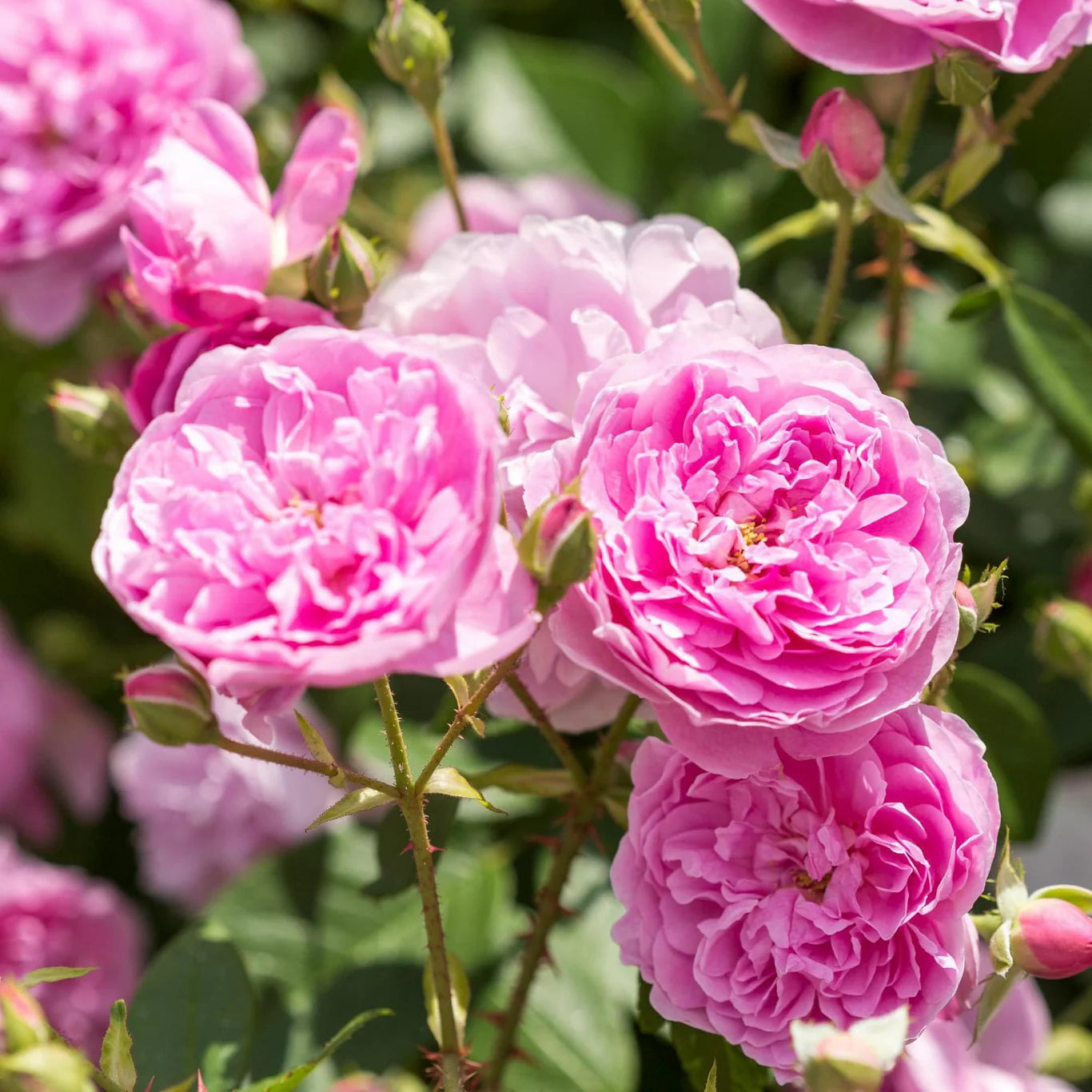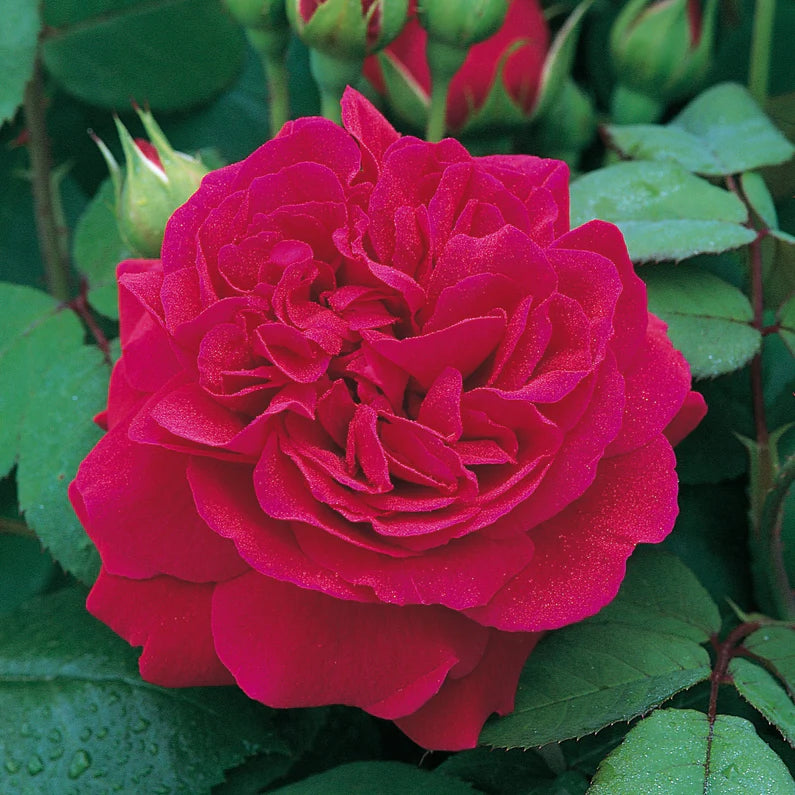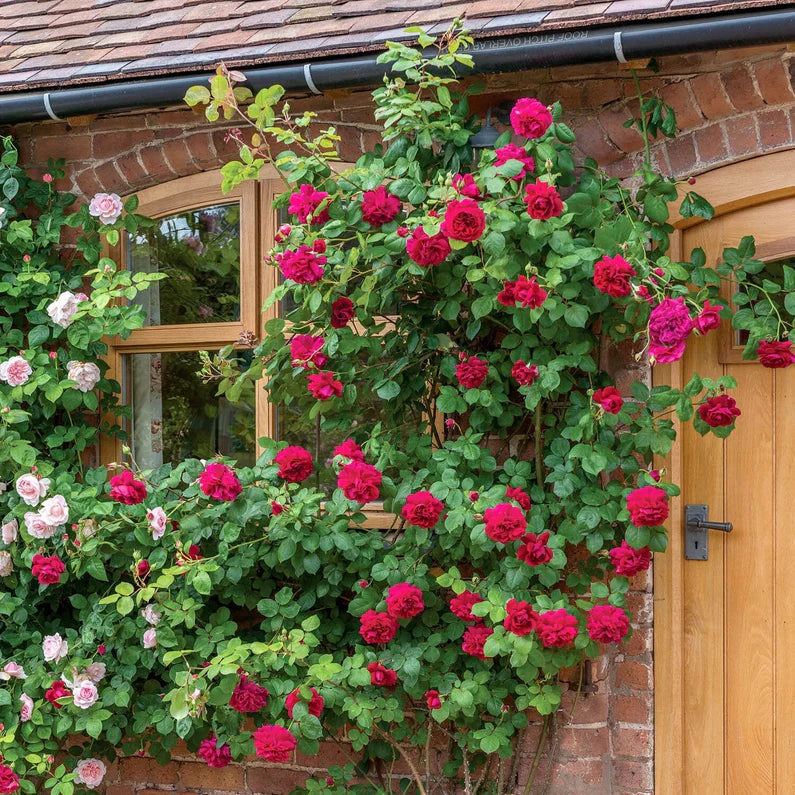10 products
10 products
Sort by:
Full Sun Shrub
Extremely hardy, this lilac is a deciduous shrub with large panicles packed with sweetly scented, tubular, single, brilliant flowers. Buds in early summer, 2-3 weeks after the common lilacs, the abundant blossoms are produced on new spring growth.Foliage is larger than other lilacs in this group. Upright rounded shrub. Excellent choice for attracting butterflies and humming birds to your landscape. Suitable as a backdrop for contrasting shrubs along foundation and border plantings. Works well for a fragrant accent and general gardening.
Light Requirement: Full Sun
Mature Size:
- Height: 6' - 8'
- Width: 5' - 6'
Zone: 2
Photos courtesy of Jeffries Nursery
_________________________________________________________________________
Choose a location that is not in line with strong north winds
Plant the crown (this is where the roots end and the woody shrub begins) of your rose 6”-12” below the surface of the soil. As your shrub will be in full leaf at time of purchase you can clean off leaves that will get buried if you like.
In the fall you will need to cover with a deep layer of mulch. Wood mulch, straw, leaves or a combination of all. Use a burlap tarp (Not Plastic) to cover and hold down with rocks or stakes. This will ensure the mulch is not blown away. A full wheelbarrow or more per rose is not out of the question. Throughout the winter direct your snow clearing efforts to cover your roses as well. The more insulation the better.
Don’t remove the tarp and mulch until night temperatures are consistently hovering about zero to +3 with no threat of deep freeze, as we sometimes see in April.
We hope you enjoy growing your David Austin Rose.
Globe Caragana is a hardy, multi-stemmed deciduous shrub with fine texture. It's a relatively low maintenance shrub and shouldn't require much pruning. Suitable for mass planting, hedging and general garden use.
Grows best in dry to average level of moisture and very well-drained soil, and will often die in standing water.
Light Requirement: Full Sun to Partial Shade
Mature Size:
- Height: 36"
- Width: 36"
Zone: 2
Photos courtesy of Jeffries Nursery
David Austin Roses were not developed for Zone 3. BUT it is possible to have success here in Manitoba by following a few key tips.
Choose a location that is not in line with strong north winds
Plant the crown (this is where the roots end and the woody shrub begins) of your rose 6”-12” below the surface of the soil. As your shrub will be in full leaf at time of purchase you can clean off leaves that will get buried if you like.
In the fall you will need to cover with a deep layer of mulch. Wood mulch, straw, leaves or a combination of all. Use a burlap tarp (Not Plastic) to cover and hold down with rocks or stakes. This will ensure the mulch is not blown away. A full wheelbarrow or more per rose is not out of the question. Throughout the winter direct your snow clearing efforts to cover your roses as well. The more insulation the better.
Don’t remove the tarp and mulch until night temperatures are consistently hovering about zero to +3 with no threat of deep freeze, as we sometimes see in April.
We hope you enjoy growing your David Austin Rose.
David Austin Roses were not developed for Zone 3. BUT it is possible to have success here in Manitoba by following a few key tips.
_________________________________________________________________________
You have three options, you can enjoy your David Austin Rose for a single season. You can plan to bring your potted David Austin Rose into a warmer winter environment, or you can plant it into the ground.
If you decide to enjoy your rose for the summer:
Feel free to drop your potted David Austin Rose into a decor pot of your liking, but do not pot it up into a larger size planter. You do not want to set back your rose. We use our Rose and Perennial Mix when potting up all our David Austin Roses and other than fertilizing your rose every other week they are simple to care for. In our experience you should have blooms from late June right through till fall.
If you decide to grow and over winter your rose in a pot:
First, you must be sure you have a place to overwinter your David Austin Rose and you should pot up your rose into a planter large enough for min of 2 years growth, using our rose and perennial mix.
Do not use pro mix.
A heated garage or sunroom that can be set between -2C and -5C. You will also need to keep your rose away from doors that open to -35C or colder. Your Rose needs to go dormant for a few months. Once the temp is over zero C you will see your rose begin to send out new shoots. At this point natural light is necessary and the temperature should not go below -1C at night. It is important to keep your shrub moist but not wet. Check temperature regularly. Do not bring it into the house! Roses can handle cool nights and warmer days.
If you decide to plant your rose in the ground:
Choose a location that is not in line with strong north winds
Plant the crown (this is where the roots end and the woody shrub begins) of your rose 6”-12” below the surface of the soil. As your shrub will be in full leaf at time of purchase you can clean off leaves that will get buried if you like.
In the fall you will need to cover with a deep layer of mulch. Wood mulch, straw, leaves or a combination of all. Use a burlap tarp (Not Plastic) to cover and hold down with rocks or stakes. This will ensure the mulch is not blown away. A full wheelbarrow or more per rose is not out of the question. Throughout the winter direct your snow clearing efforts to cover your roses as well. The more insulation the better.
Don’t remove the tarp and mulch until night temperatures are consistently hovering about zero to +3 with no threat of deep freeze, as we sometimes see in April.
We hope you enjoy growing your David Austin Rose.
David Austin Roses were not developed for Zone 3. BUT it is possible to have success here in Manitoba by following a few key tips.
You have three options, you can enjoy your David Austin Rose for a single season. You can plan to bring your potted David Austin Rose into a warmer winter environment, or you can plant it into the ground.
Choose a location that is not in line with strong north winds
Plant the crown (this is where the roots end and the woody shrub begins) of your rose 6”-12” below the surface of the soil. As your shrub will be in full leaf at time of purchase you can clean off leaves that will get buried if you like.
In the fall you will need to cover with a deep layer of mulch. Wood mulch, straw, leaves or a combination of all. Use a burlap tarp (Not Plastic) to cover and hold down with rocks or stakes. This will ensure the mulch is not blown away. A full wheelbarrow or more per rose is not out of the question. Throughout the winter direct your snow clearing efforts to cover your roses as well. The more insulation the better.
Don’t remove the tarp and mulch until night temperatures are consistently hovering about zero to +3 with no threat of deep freeze, as we sometimes see in April.
We hope you enjoy growing your David Austin Rose.
Bears flowers of the most perfect formation – shallow cups of the purest mid pink. They flower very freely from early summer until well into the autumn and have a strong, pure Old Rose fragrance. It has an excellent bushy habit with upright, vigorous growth. Maturing into an attractively rounded shrub; it flowers almost to the ground.
Named after the Royal Horticultural Society’s garden in Yorkshire, to celebrate the 200th anniversary of the society’s formation.
Zone 4
|
Bloom Size |
Medium |
|
Bloom Colour |
Mid. Pink |
|
Fragrance |
Strong Old Tea |
|
Year of Introduction |
1983 |
|
Size |
4' x 3' |
|
Family Shrub |
Root Grafted Dr. Heuy |
|
Flowering |
Repeat Bloomer |
|
Petal Count |
120 |
David Austin Roses were not developed for Zone 3. BUT ,it is possible to have success here in Manitoba by following a few key tips.
Choose a location that is not in line with strong north winds
Plant the crown (this is where the roots end and the woody shrub begins) of your rose 6”-12” below the surface of the soil. As your shrub will be in full leaf at time of purchase you can clean off leaves that will get buried if you like.
In the fall you will need to cover with a deep layer of mulch. Wood mulch, straw, leaves or a combination of all. Use a burlap tarp (Not Plastic) to cover and hold down with rocks or stakes. This will ensure the mulch is not blown away. A full wheelbarrow or more per rose is not out of the question. Throughout the winter direct your snow clearing efforts to cover your roses as well. The more insulation the better.
Don’t remove the tarp and mulch until night temperatures are consistently hovering about zero to +3 with no threat of deep freeze, as we sometimes see in April.
We hope you enjoy growing your
David Austin Rose.
Bears medium-sized neat rosette blooms – tinged with orange at first, quickly becoming rich yellow. It has a light-medium musky Tea Rose scent. The growth is compact, even and upright. Named after Wolverhampton Wanderers’ football stadium.
A striking climber bearing large, deeply cupped, bright crimson-red blooms, with a pleasing Old Rose fragrance. It is a relatively compact climber clothed in large, dark green leaves. David Austin, 1998.
Bears large, quartered rosettes, each about 4” across, packed with loosely arranged petals. They are a beautiful shade of pure apricot, paling towards the edges. There is a lovely Tea fragrance, with hints of cedar wood and vanilla. Named for Plant Heritage, who do so much to protect Britain’s garden plant diversity.





